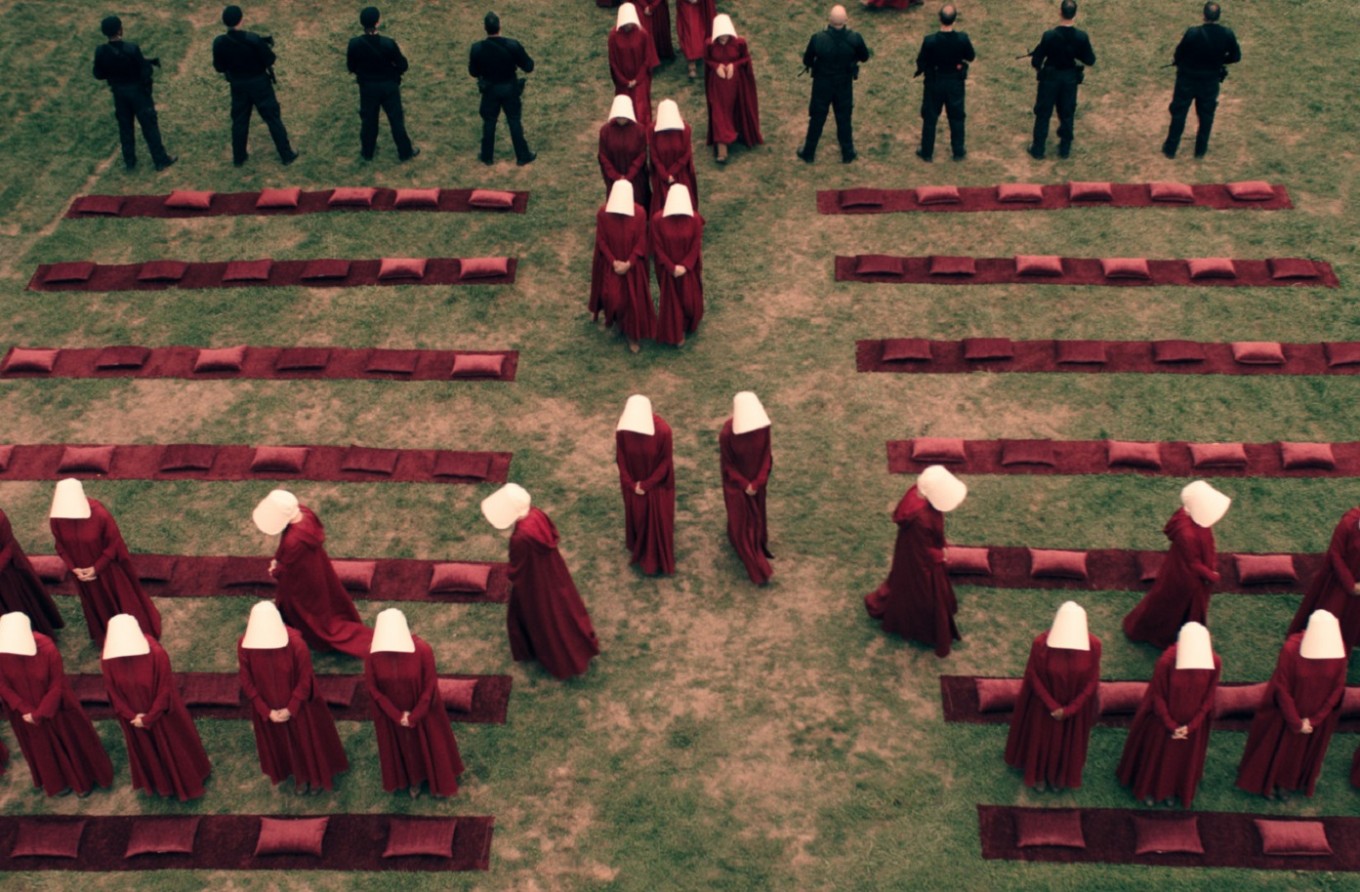Popular Reads
Top Results
Can't find what you're looking for?
View all search resultsPopular Reads
Top Results
Can't find what you're looking for?
View all search resultsFirst season of 'The Handmaid's Tale' wraps up
The first season came to an end, leaving a lingering mood of dread and a costume design that seem to have already taken on semi-iconic status.
Change text size
Gift Premium Articles
to Anyone
T
hose who managed to tear their eyes away from the last few weeks of The Handmaid’s Tale-esque news reports – gay men being caned in Aceh or rounded up and humiliated at a North Jakarta sauna – may have noticed that the fictional version of this conservative nightmare came to an end last week. Well, at least the first season did, leaving a lingering mood of dread and a costume design that seems to have already taken on semi-iconic status.
The show’s lingering mood was preserved from the first episode to the last by endless awkward silences, tortured facial expressions conveying 1,000 words, a paranoid atmosphere of constant surveillance and the Gilead citizens’ “pleasant” suburban lifestyles occasionally punctuated by horror-show rituals. Although, the frequent use of pop songs in the show’s soundtrack felt jarring, like a language from an alien world in the castrated, bleak realm of Gilead.
People who find themselves on the lower side of an unbalanced equation of power tend to resist in whatever ways they can, and the red-cloaked, bonnet-wearing handmaids at the center of the series are no exception. Over the first season, they smuggle packages of letters, speak in secret code and seek clandestine love – whatever they can do to avoid being recast in the meek, obedient mold of an ideal woman of Gilead, the theocratic regime that has taken over the United States.
In the first episode during one of their reeducation sessions, Aunt Lydia (who I’ve just realized bears an uncanny resemblance to Miss Trunchbull from Matilda) tells the would-be handmaidens: “This might not seem ordinary to you right now. But, after a time, it will. This will become ordinary.”
Read also: 'Marlina the Murderer' screenings draw crowds in France
But making Gilead feel ordinary for this “transitional generation,” who will always remember another kind of life, is not easy. Even the handmaids that break do so knowingly, and only to save their own necks, not because they accept the regime’s “better never means better for everyone” logic.
The series’ creators were liberal with their adaptation from the identically titled Margaret Atwood novel, taking the framework of the story and retaining quite a few direct lines, but making large omissions or additions, such as the Mexican trade delegation subplot.
In terms of characters, perhaps the most significant omission from the series was Offred’s mother, which I initially felt was a loss. But, as my friend and discerning cultural vivisectionist Taarna Grimsley says, the quintessential second-wave feminist mother of the book might not have been the right moral compass for a series made in 2017. To some degree, that role was taken on by Offred’s friend Moira, a queer, black woman who was too badass to be a handmaid and was assigned as a “jezebel” (sex worker), before making a daring escape across the Gilead-Canadian border in the season finale.
Moira is the show’s nod to intersectional feminism, but the problem is that it is no more than a nod. As Angelica Jade Bastién wrote in a piece for Vulture, the show doesn’t explicitly depict any of the ways life in Gilead might be different for people of color. It’s a post-racial 1700s Salem, while the US in the 2000s is still far from post-racial. Considering that Atwood based the original book’s violence and sexual coercion on American slavery, it was a glaring omission that the show didn’t depict how such a brutal traditionalist regression would unleash previously restrained racial tensions.
Read also: Tango community in Jakarta growing
On the other hand, the show delves far deeper into the relationships between women. The finale’s climactic scene, in which the handmaids refuse to stone to death one of their peers, is one example. Another is the way the discomfort of the commander’s wife about her complicity in the suffering of the handmaids grows more visible throughout the latter half of the series.
There were probably quite a few people expecting that the season would climax with Mrs. Waterford committing a decisive act of subversion. But she only digs her heels in deeper to maintain her own relative privilege at the expense of other women.
The show ends in the same way as the book, meaning that the show’s writers, now largely having exhausted their source material, will have a lot more freedom in the next season, for which Hulu has already signed up. Despite the criticism the show has received, the fact that this harrowing tale of female oppression has resonated so strongly in 2017 is a testament of how much work there is left to do to make sexism a thing of the past.
---------------
Interested in writing for thejakartapost.com? We are looking for information and opinions from experts in a variety of fields or others with appropriate writing skills. The content must be original on the following topics: lifestyle ( beauty, fashion, food ), entertainment, science & technology, health, parenting, social media, travel, and sports. Send your piece to community@jakpost.com. For more information click here.











